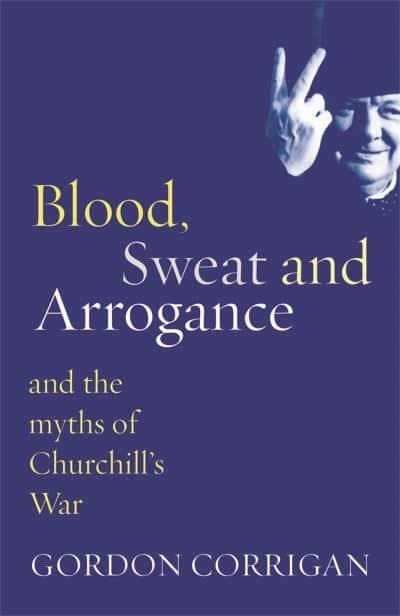Blood, Sweat and Arrogance: And the Myth of Churchill's War
Why were the British, victorious in 1918, unable to match the Germans in 1940—and why were these pioneers of tank warfare overcome for so long by Germany’s panzers? This caustic critique exposes just how close England came to losing World War II, and in the process overturns the reputations of some of Britain’s most famous generals. Churchill takes heavy blame for the poor state of the British forces in 1939, while Montgomery is revealed to have much skill with a pen…but very little in command. It’s a brilliant, eye-opening reassessment, from policy decisions in the 1920s to the great campaigns of 1939-45.
Gordon Corrigan's Mud, Blood and Poppycock overturned the myths that surround the First World War. Now he challenges our assumptions about the Second World War in this brilliant, caustic narrative that exposes just how close Britain came to losing. He reveals how Winston Churchill bears a heavy responsibility for the state of our forces in 1939, and how his interference in military operations caused a string of disasters. The reputations of some of our most famous generals are also overturned: above all, Montgomery, whose post-war stature owes more to his skill with a pen than talent for command. But this is not just a story of personalities.
Gordon Corrigan investigates how the British, who had the biggest and best army in the world in 1918, managed to forget everything they had learned in just twenty years. The British invented the tank, but in 1940 it was the Germans who showed the world how to use them. After we avoided defeat, but the slimmest of margins, it was a very long haul to defeat Hitler's army, and one in which the Russians would ultimately bear the heaviest burden.
| Author | Gordon Corrigan |
|---|---|
| Publisher | Phoenix Press |
| Place | London |
| Year | 2007 |
| ISBN | 9780304367382 |
| Binding | Paperback |
| Condition | Very Good |
How we describe the condition of our books
We are very proud of the condition of the books we sell (please read our testimonials to find out more!)
New: Exactly as it says.
As New: Pretty much new but shows small signs of having been read; inside it will be clean without any inscriptions or stamps; might contain a remainder mark.
Very Good: Might have some creases on the spine; no hard cracks; maybe slight forward lean and short inscription inside; perhaps very minor bumping on the corners of the book; inside clean but the page edges might be slightly yellowed.
Good: A few creases on the spine, perhaps a forward lean, bumping on corners or shelfwear; maybe an inscription inside or some shelfwear or a small tear or two on the dustjacket; inside clean but page edges might be somewhat yellowed.
Fair: In overall good condition, might have a severe forward lean to the spine, an inscription, bumping to corners; one or two folds on the covers and yellowed pages; in exceptional cases these books might contain some library stamps and stickers or have neat sticky tape which was used to fix a short, closed tear.
Poor: We rarely sell poor condition books, unless the books are in demand and difficult to find in a better condition. Poor condition books are still perfect for a good read, all pages will be intact and none threatening to fall out; most probably a reading copy only.


